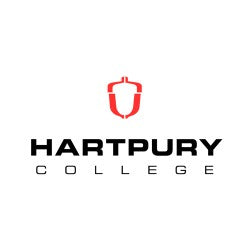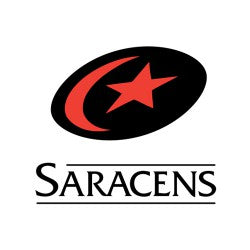Sport at St Joseph’s College is well established and most people will be familiar with the National Schools Rugby Festival held every October. Focus sports at the College are Rugby, Netball, Cricket and more recently added Football. Therefore, our provision is spread across multiple sports and year groups. This brings with it its own challenges which most Athletic Development coaches reading this can empathise with. However, it does also bring about a huge amount of coach development opportunities working across multiple sports with a variety of physical demands.
Since joining St Joseph’s in 2017 we have steadily built our Athletic Development provision along with our sports science support. We now offer over 40 hours of athletic development across a week ranging from year 5-13. Our provision is now also bolstered by our revamped physical education programme in key stage three where half of this curriculum is dominated by an extensive athletic development programme. This physical education programme is biobanded in groups based on stages of maturation and we have our own anecdotal evidence that this is working extremely well amongst the groups and as a department, we have noticed a significant increase in the uptake of physical activity and sport at the College.
The addition of Declan Foster as a full-time athletic development coach in 2021 has been a huge addition to our programme and Declan has now driven on key aspects of our provision whilst also adding bespoke after school clubs such as Olympic Weightlifting. We are proud of the offering we have at St Joseph’s, for a relatively small school in Suffolk we take care of our students who are engaged in our sports. In addition to the athletic development provision, we also have a full-time performance analysis placement student through the University of Essex. This individual oversees the filming and clipping of our sports fixtures and training using both HUDL SportsCode and the Veo systems. Our wrap-around provision also extends to a comprehensive sports medicine offering with two full-time physiotherapists on-site throughout the academic year. We have significant investment in our sport science equipment and we are lucky enough to have Playertek GPS, OptoJump and Brower Timing system which allows us to adequately test and monitor our athletes as they progress through maturation and their training programmes.
Gym Aware Case Study
The use of velocity-based training methods has gained significant attention in recent years, largely due to the availability of technologies to accurately track bar velocity etc. GymAware has always been held in high regard, in fact, it has largely been seen as the gold standard in the industry. As the popularity of both the technologies and the training methods have grown we have seen the expansion of this methodology be introduced to the school sector. VBT has some more subtle benefits that can be of huge impact on youth athletes. The ability to prescribe based on bar velocity and provide velocity ranges to work in can aid in controlling the load an athlete is using. This is of particular benefit when working with young athletes (usually male) who have a desire to chase high loads long before they are proficient or strong enough to do so. The competitive element of using a technology such as GymAware can also be of significant importance when working with young athletes who tend to work within themselves and lack significant motivation when it comes to lifting weights. We were delighted to partner with Perform Better in September to undertake a case study in our environment using GymAware.
How did you intend to implement it?
We set out a 5-week intervention with our Senior Rugby players where we split the backs and forwards into two groups. The backs were assigned to the velocity-based training prescription group and the forwards were assigned to a self-selected load based on how they felt with the aim to move as much weight as they could with maximum intent. We used the GymAware for our primary exercises on each day which was Back Squat, Barbell Bench Press and Trap Bar Deadlifts where for the VBT groups we prescribed specific velocity zones for them to work within.
Within our population of athletes, we often have a two-fold problem where on one hand we have some athletes who will often put too much load on the bar which can lead to compromises in the quality of the movement and then on the flip side we have athletes who do not push themselves and do not use enough load which can result in a lack of intent when lifting and the athlete not achieving the desired adaptation. Therefore, the strategy was to utilise the GymAware to manage the load by having the athletes work within specific velocity zones while lifting with maximum intent each repetition. The thought process behind this was that it would auto-regulate the load for the VBT group and we could then compare the differences in session RPE between the VBT group and non-VBT group as well as the changes to our objective markers for each group after the 5 weeks. We also monitored session enjoyment for each group so we could see if utilising the GymAware increased the enjoyment of the athletes and may therefore increase buy-in.
Were there any concerns?
There weren’t many concerns with regards to the implementation of GymAware however some of the things we were keen to keep an eye on was if the athletes would find the GymAware interface user friendly, if using GymAware would disrupt session flow and increase session time and also if by focusing on moving as fast as possible would compromise the quality of movement. However, we found none of these areas became a concern, we found the athletes could interact and use the interface with no issues, we found sessions flowed smoothly and we found that players maintained quality movement while moving with increased intent.
Initial Observations
Our initial observations on the implementation of GymAware was that there was a clear increase in intent from the VBT group. We also found the VBT group was able to select suitable loads more easily based on the velocity zone they were working on whereas the non-VBT group struggled more with selecting a suitable load. We also saw an immediate increase in buy-in from a number of the athletes in the VBT group, this may have been down to the novelty of the technology, the gamification that VBT brings to the sessions or through an increase in competitiveness with the athletes aiming to beat one another’s score.
Student Feedback
Overall the feedback we received from the students on the use of GymAware was positive, with the athletes in the VBT group reporting similar enjoyment scores for each session to the non-VBT group despite the athletes in the non-VBT group being traditionally better trainers who get more enjoyment from the gym. We measured session enjoyment on a scale 1-10 with 10 being the most enjoyable session you have ever had and 1 being the worst. Both groups reported average scores of 8 across the 5-week case study.
Data Outcomes
We saw a greater improvement in performance measures in the VBT group in comparison to the non-VBT group. We saw significant increases in Countermovement Jump Height and Peak Power in the VBT group whereas we saw a slight decrease in both measures for the non-VBT group. We found that both groups reported similar RPE (Rating of Perceived Exertion) scores across the 5-week case study.
Key Takeaways
We found GymAware to be a great asset to our current Strength and Conditioning provision at St Jo’s and see it as a valuable piece of technology that can provide great benefits to coaches working in the School sector. The biggest takeaway for us was the increase in training intent we saw from our VBT group compared to the non-VBT group and as has been shown the intent to move a weight rapidly (irrespective of load) enhances the development of Rate of Force Development (Blazevich et al, 2020), which is a key quality we are looking to develop in our athletes. Alongside the increased intent to move quickly, the use of GymAware was a highly valuable tool for controlling the weight our athletes are putting on the bar. By shifting the focus from how much weight an athlete is lifting to the velocity they are moving it at, it allowed for auto-regulation of the load being used and ensured that athletes were using sufficient load while also ensuring they are not overloading the bar.
GymAware also allowed us to provide greater individualisation to our athletes in an efficient and effective manner by allowing us to target different qualities such as speed-strength or maximum strength for example through the use of velocity zones, this meant even when we had large training groups in we could still individualise session to specific athletes. Finally, a key takeaway for us was the enjoyment and buy-in to training we saw in the VBT group, the use of GymAware provided gamification of training through the use of velocity and immediate feedback, this also provided competition between athletes to hit higher velocities in a safe manner as the load was not as great a factor. It also provided more confidence to athletes who are perhaps not as strong in traditional movements but since the focus was on the velocity they moved at and not the weight this provided them with more confidence.
Therefore, we believe GymAware can provide lots of benefits in the school environment and can be a great addition to the strength and conditioning provision provided to students. It will allow for greater individualisation, buy-in and intent within training sessions and is a great tool for coaches to help their student-athletes improve their performance. Once again, we would like to thank Perform Better for the opportunity to partner with them for this case study and the support they have provided throughout. Perform Better have been a great partner of St Jo's as we have grown our Athletic Development provision and provide a great service for schools and colleges.
Sam Power - Head of Sport Science
Sam is now in his fifth year as Head of Sport Science at St Joseph’s College having come from Loughborough University in 2017. His career in the industry started back in 2012 at Waterford Institute of Technology (Ireland) where he started his undergraduate degree in Sports Coaching and Performance, during this degree he spent one season with Jersey Reds from 2014-2015 in the Championship as part of an internship programme. Following this Sam moved to Loughborough University for my Masters degree and alongside his studies worked with the rugby programme (BUCS Super Rugby & National One) as a strength and conditioning / sport science intern. Prior to this case study Sam has had limited experience with VBT. Having only used GymAware once at Loughborough University, he felt he was not proficient with using the system and the platform itself. These technologies were always something that he wanted to utilise more in his own coaching practice.Declan Foster - Assistant Athletic Development Coach
Declan has been working in the Strength and Conditioning industry for 5 years, working predominantly within Long Term Athletic Development. Having worked in the Strength and Conditioning industry for 5 years, working predominantly within Long Term Athletic Development. Declan started his career as a student at the University of South Wales where he completed a Bachelor's degree in Strength and Conditioning. During his time at the University he coached within the Universities Multi-Sport program working predominantly with the Hockey and Rowing programs. Whilst at the University he also spent two years as a Strength and Conditioning coach at Newport High School and during this time spent some time coaching within the Dragons age-grade and Academy programs. After completing his Bachelors degree, Declan undertook his Masters Degree at the University of South Wales studying Advanced Coaching in Strength and Conditioning and during this time he completed a 3-month internship as a Sport Scientist at Cardiff City Football Academy before moving on to Llandovery College as an Athletic Development Coach. Declan then moved onto his current role as a full time Athletic Development Coach at St Joseph’s College. Previous to carrying out the case study Declan had some experience with VBT using the PUSH Band 2.0 however he had a limited amount of experience utilising GymAware and this was therefore a great opportunity for them to dig into the technology and get some hands-on experience utilising it.



































